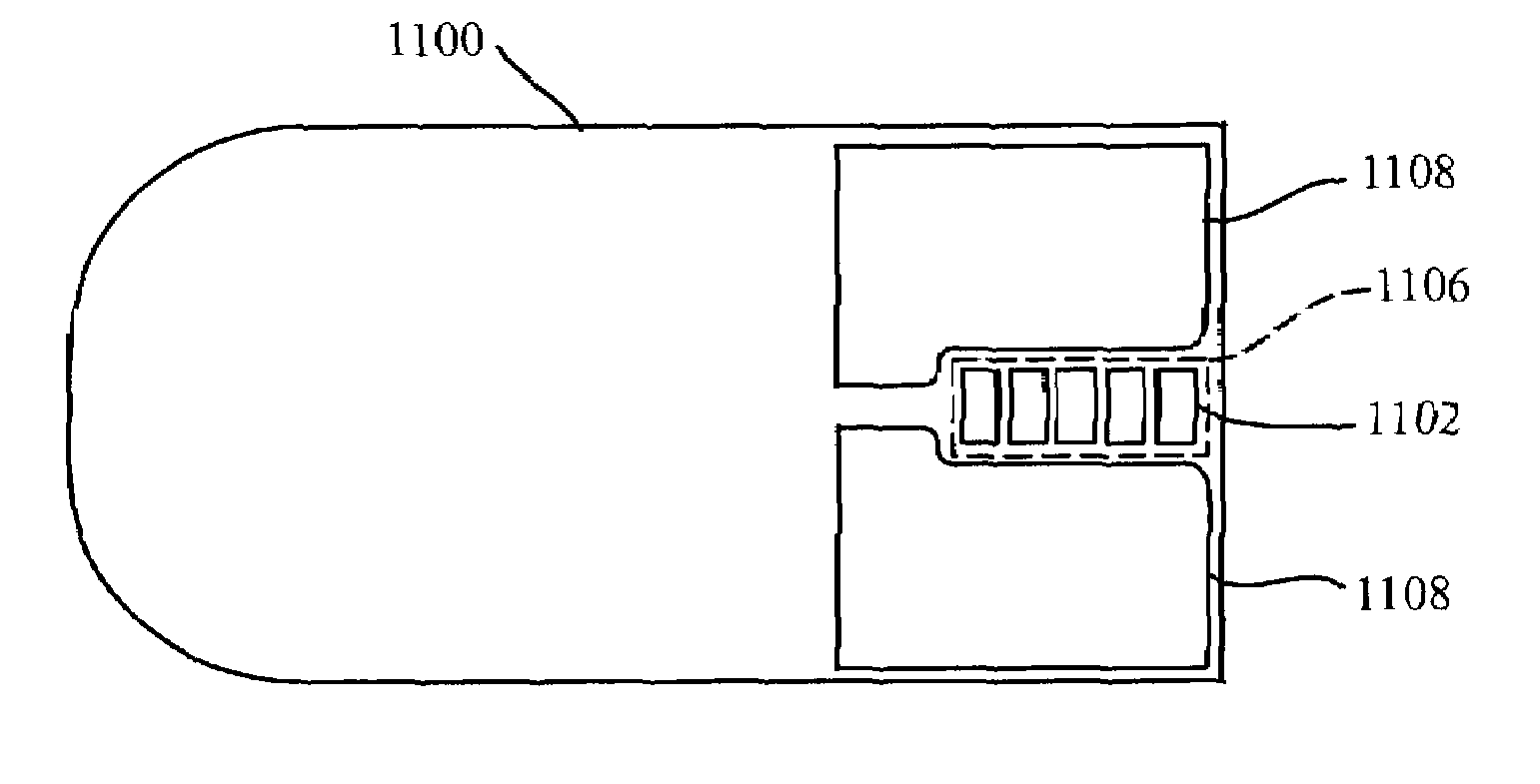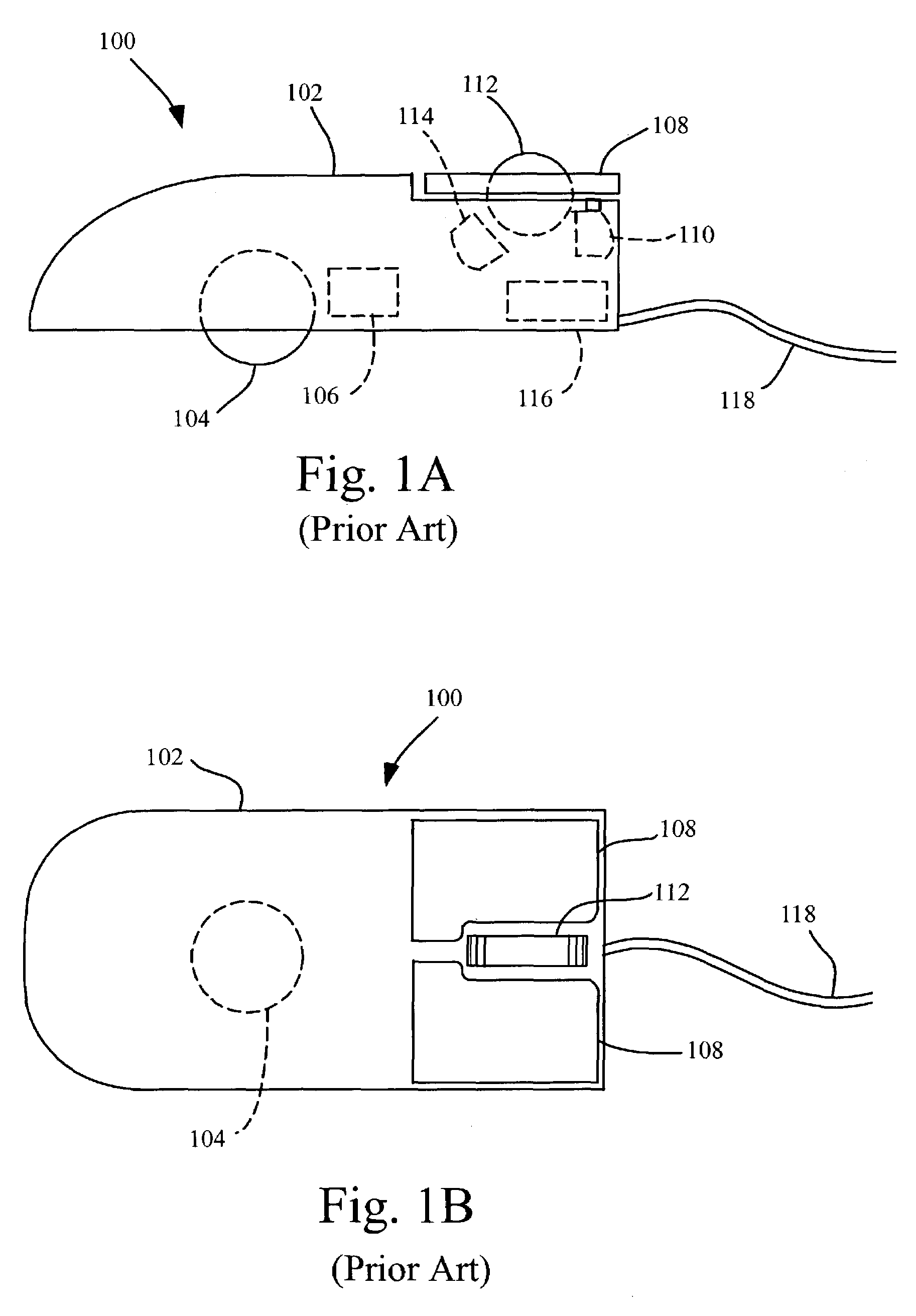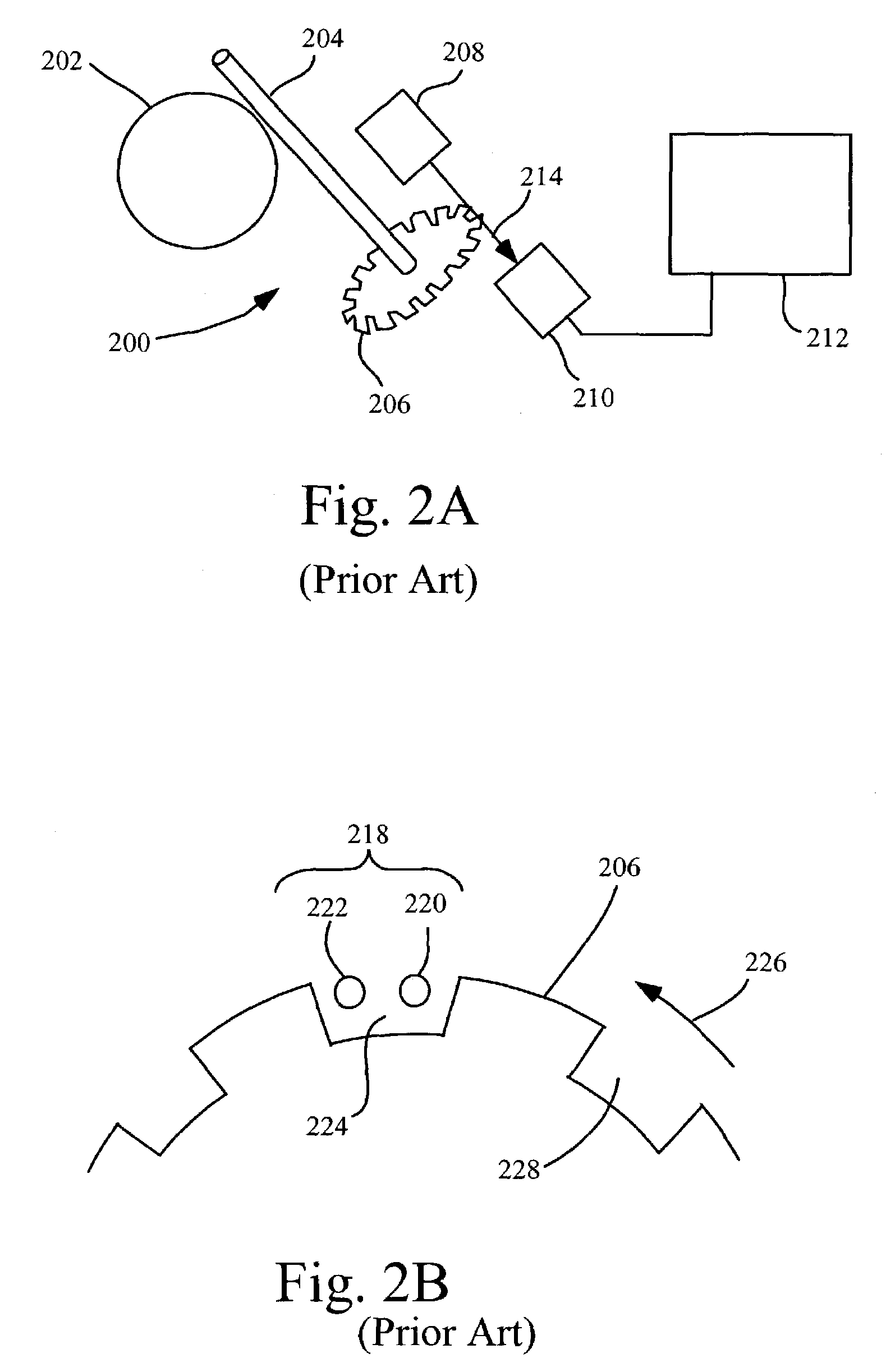Capacitive mouse
a mouse and capacitive technology, applied in the field of mouse, can solve the problems of direct electrical contact with moving objects, increased friction, wear and corrosion of contacts, and easy mechanical failur
- Summary
- Abstract
- Description
- Claims
- Application Information
AI Technical Summary
Benefits of technology
Problems solved by technology
Method used
Image
Examples
Embodiment Construction
[0042]The following description of preferred embodiments of the disclosure is not intended to limit the scope of the invention to these preferred embodiments, but rather to enable any person skilled in the art to make and use the invention.
[0043]For reference, FIG. 1A shows the elements of a conventional prior art mouse 100 in side view. Enclosure 102, typically of hard plastic, forms the body of the mouse. Ball 104 protrudes from the bottom of enclosure 102 through a small hole. Motion of the mouse over a flat surface causes ball 104 to rotate; this rotation is measured by rotary encoders 106. Typically two rotary encoders are used to measure motion of the mouse in two orthogonal axes. Buttons 108 form part of the top surface of enclosure 102. Finger pressure on buttons 108 is detected by switches 110 mounted below the buttons. Scroll wheel 112 is mounted between buttons 108; its rotation is measured by rotary encoder 114. Inputs from rotary encoders 106 and 114 and switches 110 ar...
PUM
 Login to View More
Login to View More Abstract
Description
Claims
Application Information
 Login to View More
Login to View More - R&D
- Intellectual Property
- Life Sciences
- Materials
- Tech Scout
- Unparalleled Data Quality
- Higher Quality Content
- 60% Fewer Hallucinations
Browse by: Latest US Patents, China's latest patents, Technical Efficacy Thesaurus, Application Domain, Technology Topic, Popular Technical Reports.
© 2025 PatSnap. All rights reserved.Legal|Privacy policy|Modern Slavery Act Transparency Statement|Sitemap|About US| Contact US: help@patsnap.com



